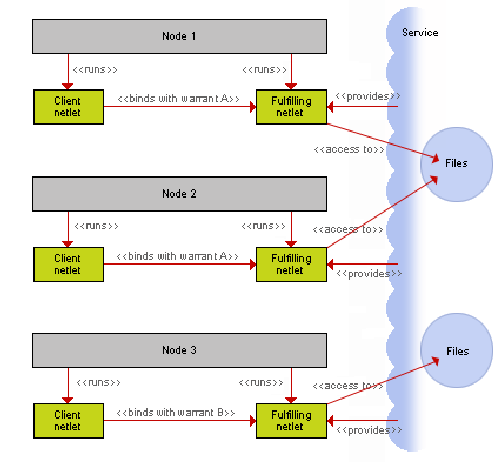Next: Warrant binding Up: Useful phrases Previous: Unsigned argument Contents
A right to use a service, represented as XML.
Another way to think of a warrant is that it is evidence of a contract. If a contract has been arranged (on- or off-line) then a warrant will result so that the service can be used and the contract fulfilled.
When a client netlet wants to use a service it presents its warrant
to the node which then finds and binds the server netlet. Of course,
for a node to use a warrant to find the right netlet the warrant needs
to contain either a descriptor or a URL reference of where to find
that descriptor--Figure ![[*]](crossref.png) . So to
make use of a service, a netlet needs only a warrant. This contains
everything a node needs to find and bind a service, however indirectly.
. So to
make use of a service, a netlet needs only a warrant. This contains
everything a node needs to find and bind a service, however indirectly.

|

|
A warrant is not just a general right to use a service--it is very
likely to be limited for the terms of the particular contract for
which it was issued. Two netlets may have warrants to use a service,
but one may be time-limited, and another may be resource limited.
That's up to whoever arranged the contract. In Figure ![[*]](crossref.png) different warrants for the same service allow their holders access
only to their area of that service.
different warrants for the same service allow their holders access
only to their area of that service.
The contents of a warrant is signed to prevent tampering.
Nik Silver 2001-11-21